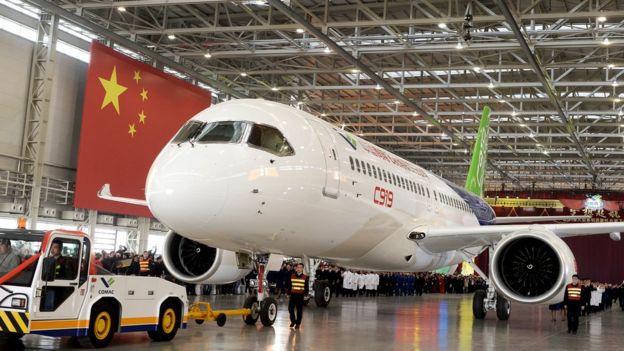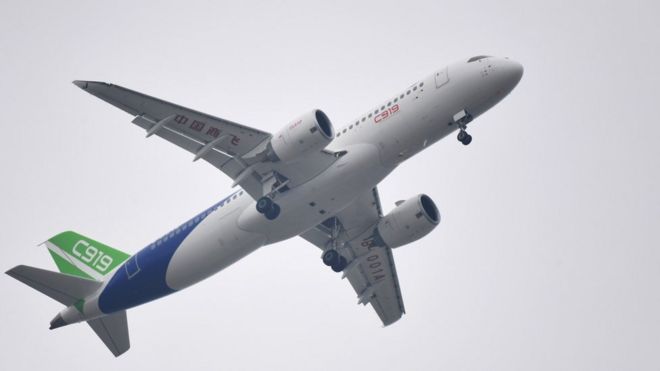Postby jwocky » Mon May 08, 2017 9:59 pm
I did a little bit digging since my last post. The weights and sizes are aboutish in A320 range despite the fact that most of the fuselage is aluminum, not carbon fiber. So somewhere this additional fuselage weight is hidden which can be only in the wings section or in the internal sumk of systems. Since the wings are allegedly made with 8% alu and 12% carbon fiber and have only a slighter lower volume per se than the comparable Airbus wings, it has to be in the bigger part the internal installations. Lighter batteries, maybe a bulkhead less in the cargo compartment, less windows or doors or lighter interior.
Interesting are the partners: Bombardier is in it, which makes sense because Bombardier wanted also to have the hands in the bigger jet market since a long time. Bombardier has helped to design the electrical systems and delivers most of it for now.
GE financial is in it which means, the world's biggest aircraft leasing service. This would mainly indicate, if the C919 gets a European certificate, some of the European airlines could just get the plane via the same channels they get all others. The first suspect here is of course no suspect anymore, Ryan Air has announced to have options for at least five.
However, the story doesn't actually end with the C919, nor did it really start there. China has two times before tried to develop passenger planes and failed both times for the same reasons: Too much weight/aerodynamic problems and suppliers from out of China who delivered outdated systems because China insisted, if you want in, you have to give us all you know-how about what you deliver with the goal to produce the stuff as clone later in China. Now, the weight and aerodynamic problems seem to be under control this time. Actually, the C919 is the first plane completely down to almost every detail simulated in a supercomputer before even the first part was built. And the Leap engines from CFM produce enough power as well. Now, the Chinese manufacturer AVIC has shown a mockup for an engine similar in size and power (with 28600lbs and no digital power authority), but with some significant detail differences to the LEAPs on the 2015 air show. While it is rather conservative and a bit weaker and has not the latest bells and whistles, Airbus is so proud of, it has also not the same vulnerabilities. So it is not an exciting engine but a way to build a relative reliable one. This engine will be allegedly available in 2020, when the Comac 919 should go in series production. The fun part is, the engine is not origianlly developed for the C919 but the development started earlier as WS-10 and goes now in a WS-20 variant and it is the power plant for the Chubby Girl, the Y-20 project, a strategic airlifter in almost C-5 size (actually between Il-76 and C-5). So, four of them per Y-20 and two per C919, that adds up actually to the production numbers China announced. Someone seems to have understand the concept of production synergy. And just like the C919, the Y-20 also started out originally with other engines, Russian Soloviews D30kp, which is the same engine we know from Tu-154 and Il-76M. So, the military airlifter does here the bigger step with getting those newer AVIC engines. For the C919, the the AVICs would mean still behind the latest western planes, but for the Y-20 it would mean to be up to par or superior to most competitors.
Bottom line is, if the C919 and the ACIV engines have a weakness, it's in the electronic. Not much fancyness there, but then China needs a plane that is easy to maintain, not a plane with the absolute bleeding edge toys. Which was as of yet actually the domain of the 737 which, very old in concept, was always more known for being somewhat tough. The 737 kept the market because Airbus overplayed the technology on occasions and thus had some incidents. However, I would not expect the C919 too often on the western markets years to come. Especially if the plane is good, the demand China has is so big, there will be not enough of those planes to go around. Production capacities are announced with 150/year from 2020 on, but if they really bring it that high, it would make me wonder. That would be equalize with the production capacity of Boeing, only Boeing has trained workers, grown plant and a grown infrastructure. So, good or not good, and even under optimal conditions, if they have 500 orders mostly from Chinese airlines, if they have to fulfill those orders, they are busy till 2025 and have no planes over they can even offer to any new customers.
And here is another funny fact: To make the C919 and Y-20 programs work so far, China had to pull engineers from naval technology and military development. It was around 2005 the big news that they had basically put their boomer program on ice, so keen they were to get the knowledge into the plane development. Actually, China has postponed the next stages for the 9-4 ballistic missile submarines and the 9-3 attack subs now by ten years and there is no sign, they will actually do it in the next future. So, to push those aircraft programs even more, they would need more qualified engineers and it seems, those are a rare commodity given how many things happen in China at the same time.
Free speech can never be achieved by dictatorial measures!

